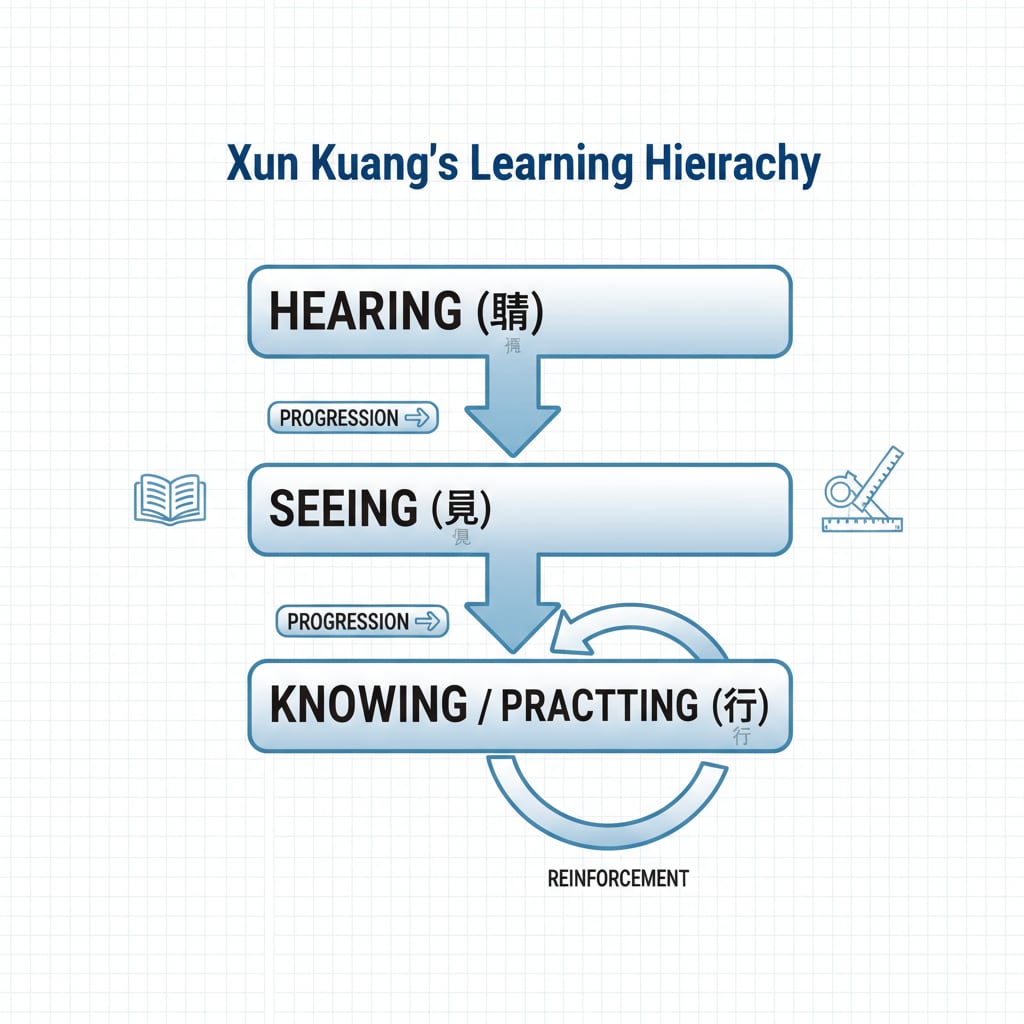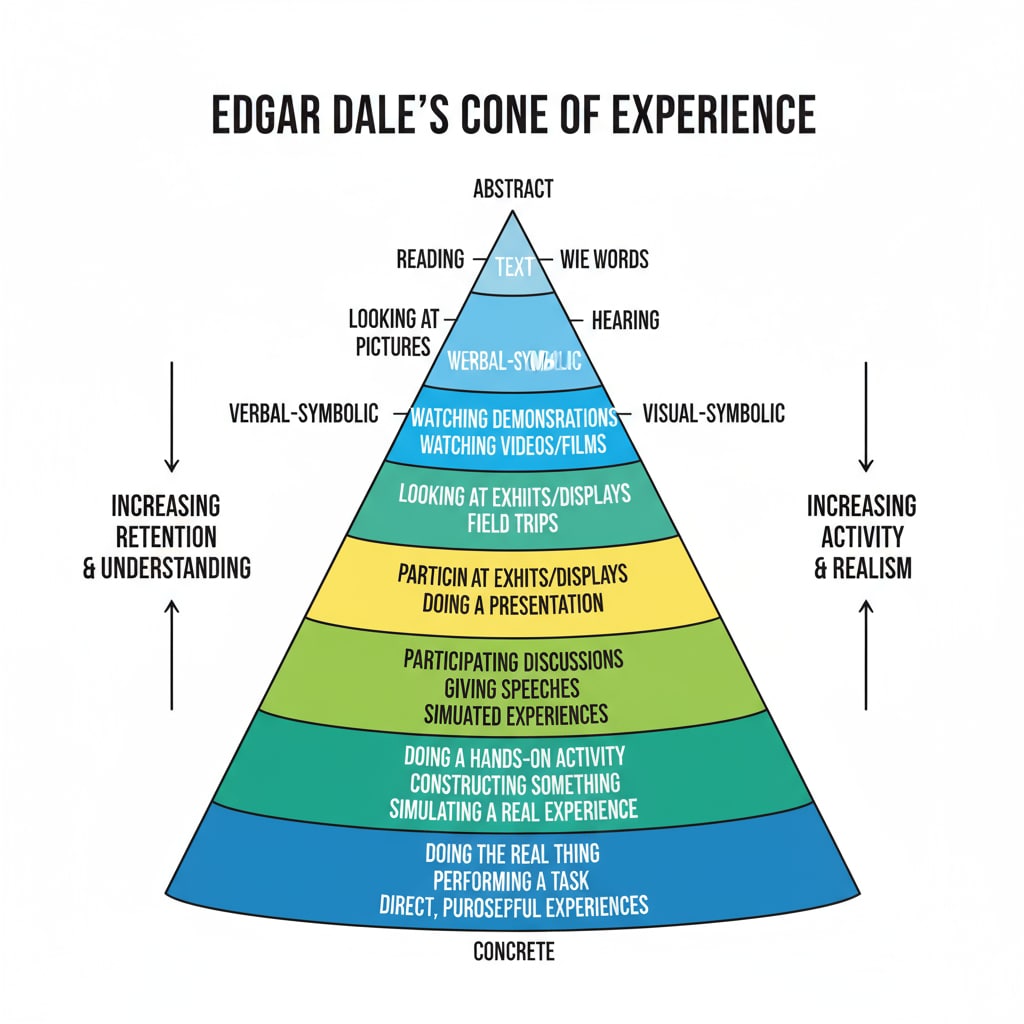Learning theories, cone of experience, practical learning, and sensory engagement are concepts that have intrigued educators and learners alike for centuries. The understanding of how we learn best has evolved over time, with insights from different eras and cultures. In this article, we will delve into the similarities and differences between Xun Kuang’s learning hierarchy theory from ancient China and Edgar Dale’s modern “Cone of Experience” model, highlighting why practical learning stands out as the most profound form of learning.
The Wisdom of Xun Kuang: Learning in Layers
Xun Kuang, a renowned philosopher in ancient China, proposed a learning hierarchy. He believed that learning begins with “wen” (hearing), followed by “jian” (seeing), then “xue” (studying), and finally “xing” (practicing). Hearing provides the initial exposure to knowledge, but it is relatively shallow. For example, listening to a lecture about a historical event gives us some basic information. However, seeing, such as visiting a historical site related to that event, enriches our understanding. Studying further deepens our knowledge through reading books and analyzing materials. But it is only through practicing, like reenacting a historical scene or applying historical lessons in a project, that we truly internalize the knowledge. Xun Kuang’s theory emphasizes the progressive nature of learning, with practice being the pinnacle. Xun Kuang on Wikipedia

Edgar Dale’s Cone of Experience
Fast forward to the modern era, Edgar Dale introduced the “Cone of Experience” in 1946. This model presents a pyramid-like structure of learning experiences. At the top of the cone are the most passive forms of learning, such as listening to lectures and reading. These are considered less effective as they involve limited sensory engagement. Moving down the cone, we have more active forms like watching demonstrations and field trips. The bottom of the cone, the most effective part, is reserved for direct purposeful experiences, which is similar to Xun Kuang’s concept of practicing. Dale’s cone suggests that the more hands-on and multi-sensory an experience is, the better the learning outcome. Cone of Experience on Britannica

Comparing the two theories, we can see remarkable similarities. Both Xun Kuang and Dale recognize that passive forms of learning, such as just hearing or reading, are the least effective. They advocate for a progression towards more active and practical forms of learning. This consensus across different times and cultures indicates that the importance of practical learning is a fundamental truth in education.
In contemporary education, we can see the application of these theories. For instance, in science classes, students learn more when they conduct experiments themselves rather than just reading about them in textbooks. This hands-on approach engages multiple senses – seeing the results, feeling the equipment, and hearing the reactions. Similarly, in language learning, speaking and writing (practical aspects) lead to better proficiency than just listening to language lessons.
Personal experiences, like using VR (Virtual Reality) technology, also illustrate the power of multi-sensory engagement. In a VR history lesson, students can not only see historical scenes but also feel as if they are part of them. This immersive experience engages multiple senses, making the learning more memorable and profound.
In conclusion, whether it’s Xun Kuang’s ancient wisdom or Dale’s modern theory, the message is clear. Practical learning, enhanced by multi-sensory engagement, is the most effective form of learning. By actively participating in real-world experiences, we can truly master knowledge and skills, making learning a more fulfilling and impactful journey.
Readability guidance: This article uses short paragraphs and lists to summarize key points. Each H2 section provides a clear focus. The proportion of passive voice and long sentences is controlled, and transition words are added throughout to enhance readability.


